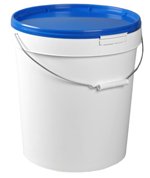 How to Measure Pressure
For an accurate reading you’ll need a water pressure gauge. Hook this to the faucet nearest your main water line. Make sure all the water in the house is turned off, including ice maker. Turn on your faucet and read the pressure. Write it down. Do this again an hour or two later. Ideally you would do this over two or three days at the time you expect to run your system, usually early in the morning. However, if you’re a late sleeper, try a couple of days in a row at a consistent time. The low number will be the important number.
How to Measure flow Capacity
Flow capacity is considered your Maximum Available GPM. The amount of water that moves through pipes at any given time is your flow rate. Flow rate is measured in either gallons per hour (gph) or gallons per minute (gpm). Sprinkler systems and drip emitters have designated output rates which are measured in gpm or gph. When you design your sprinkler layout you can put only as many devices to any given zone as your water supply can accommodate. If your irrigation design has a zone that requires a higher flow rate you can simply create break down that area into smaller zones. 
There are two ways to measure your flow rate. The first is the bucket test. Get a 5 gallon bucket. Old painter’s buckets work fine. The first thing to do is make sure it is actually 5 gallons. Some are larger. Take a one gallon milk jug, fill and empty it into the bucket five times and mark the level. Now empty the bucket. Turn off all water in the house. Go to the same faucet you used to test your water pressure and time how long it takes to fill the bucket. The time needs to be fairly accurate but you don’t need a stop watch, though they are best. The second hand on a watch will suffice. As with the pressure, do this more than once over a few days. Now it’s simple math. Divide 300 by the seconds to give you the GPM. For example, if your time is 20 seconds then 300 divided by 20=15GPM. Or 300 divided by 15 seconds = 20GPM.
 The simpler method is with a flow gauge. It attaches to the faucet and gives a quick, accurate reading. Either way will work. The simpler method is with a flow gauge. It attaches to the faucet and gives a quick, accurate reading. Either way will work.
Now you have your water pressure and flow. Time to get into the design and that’s the next article. |